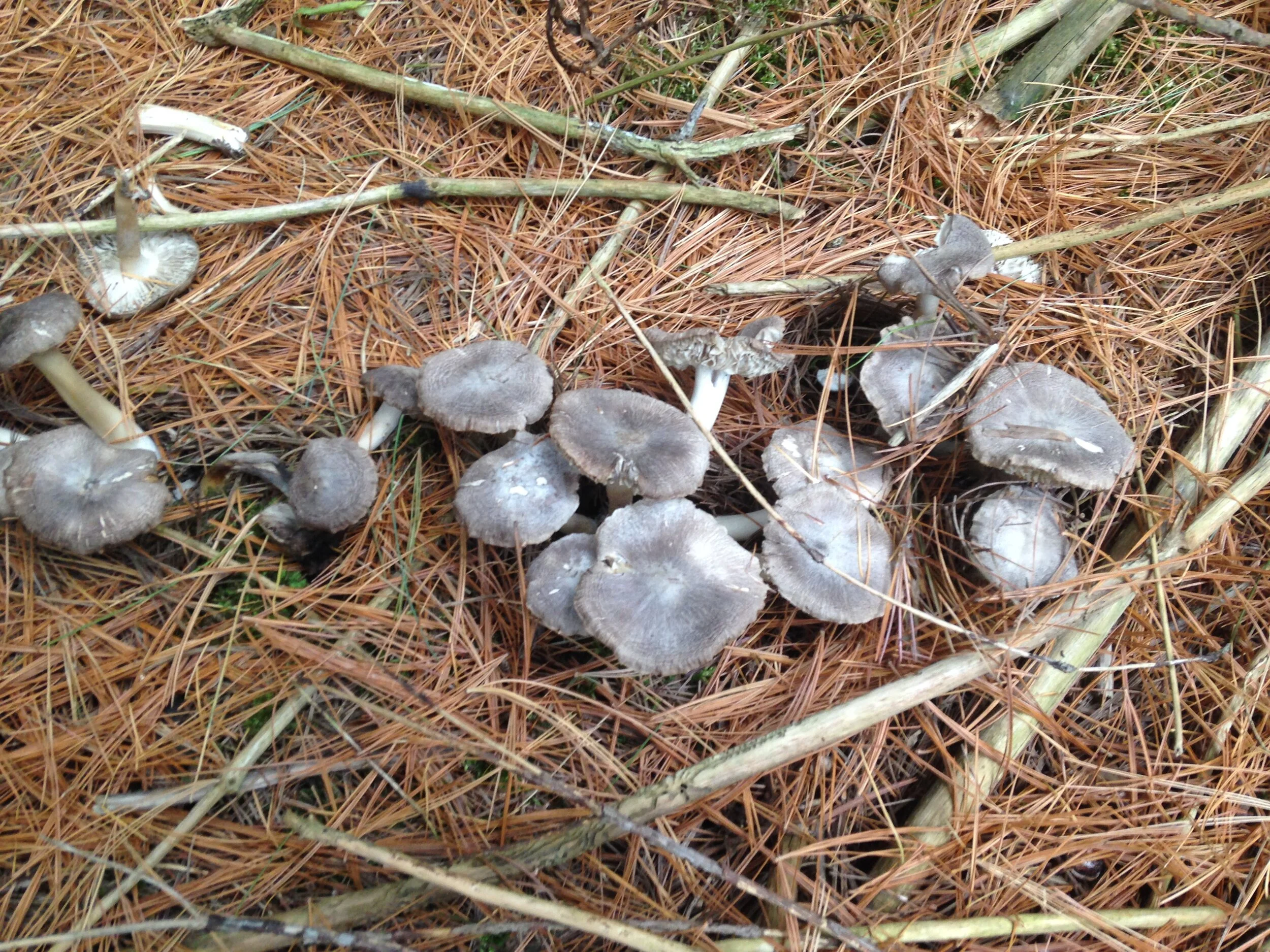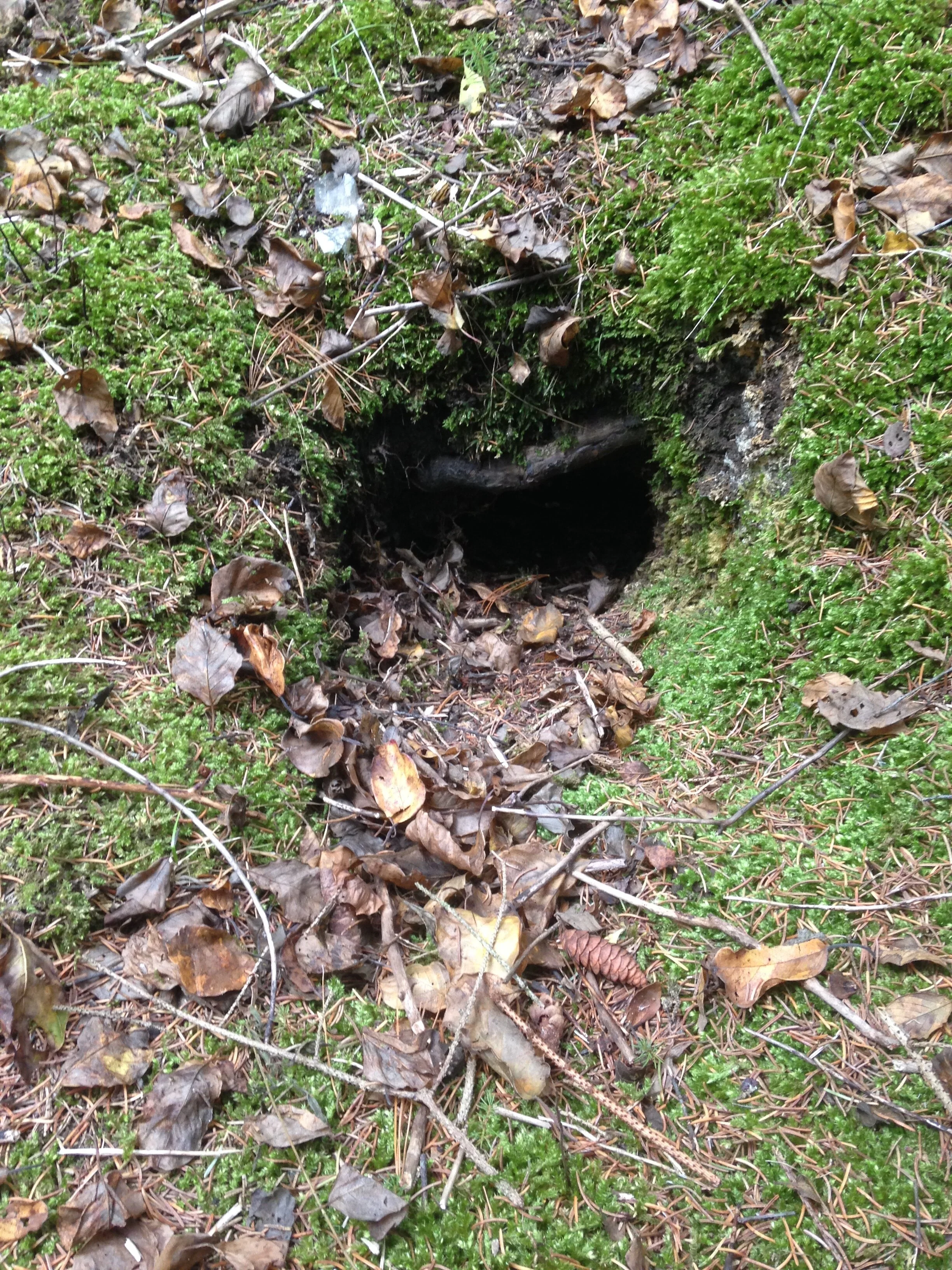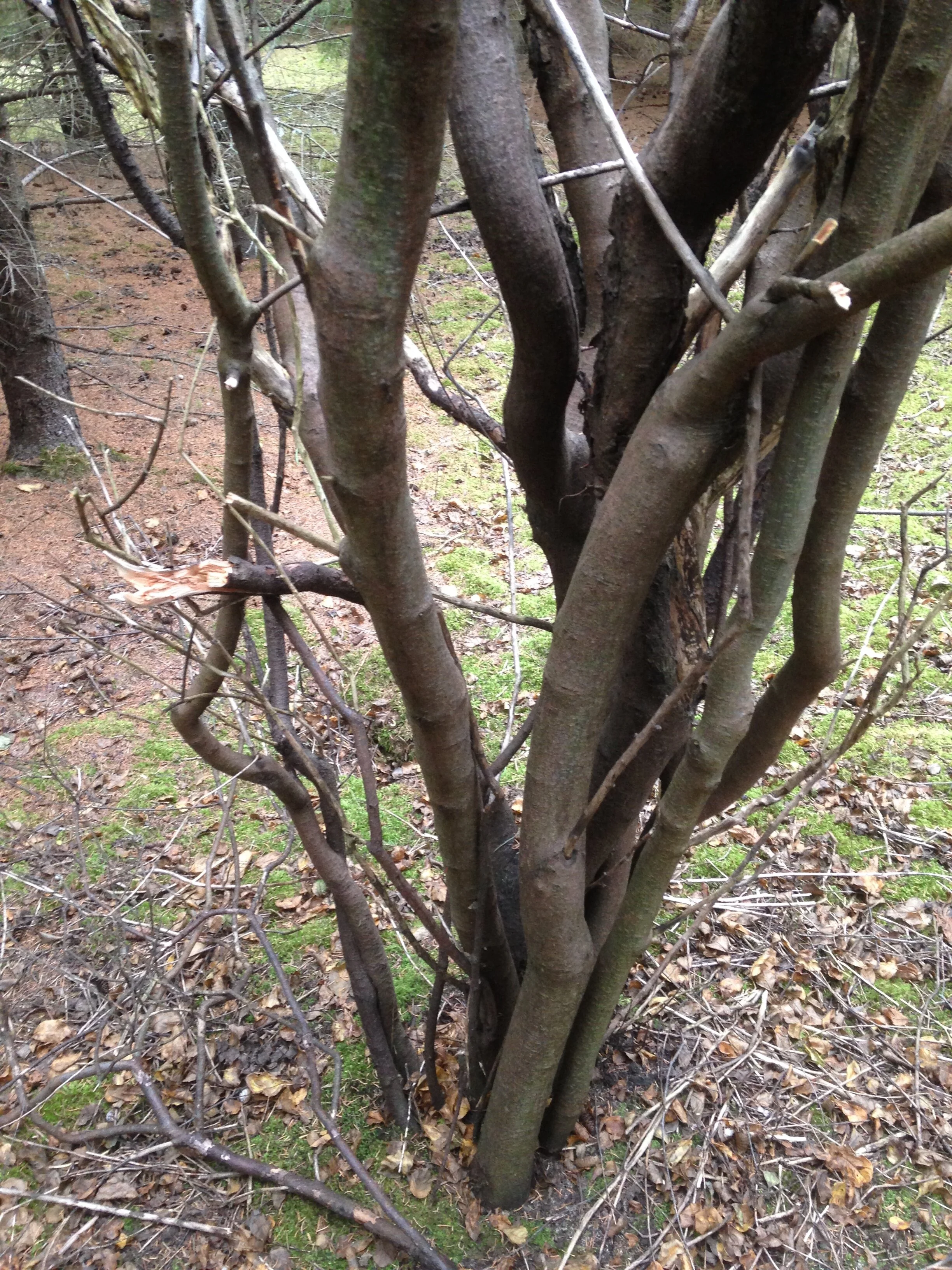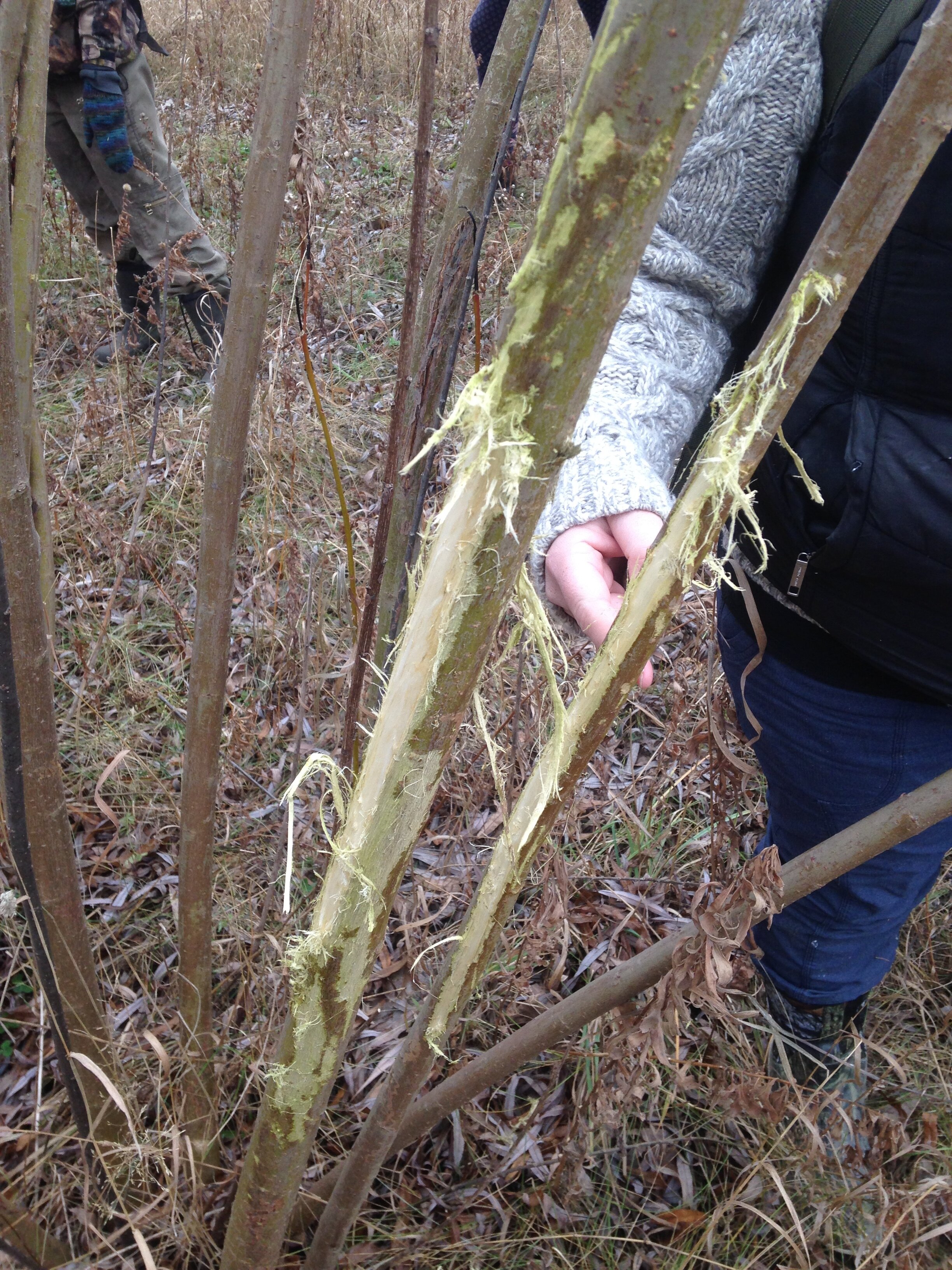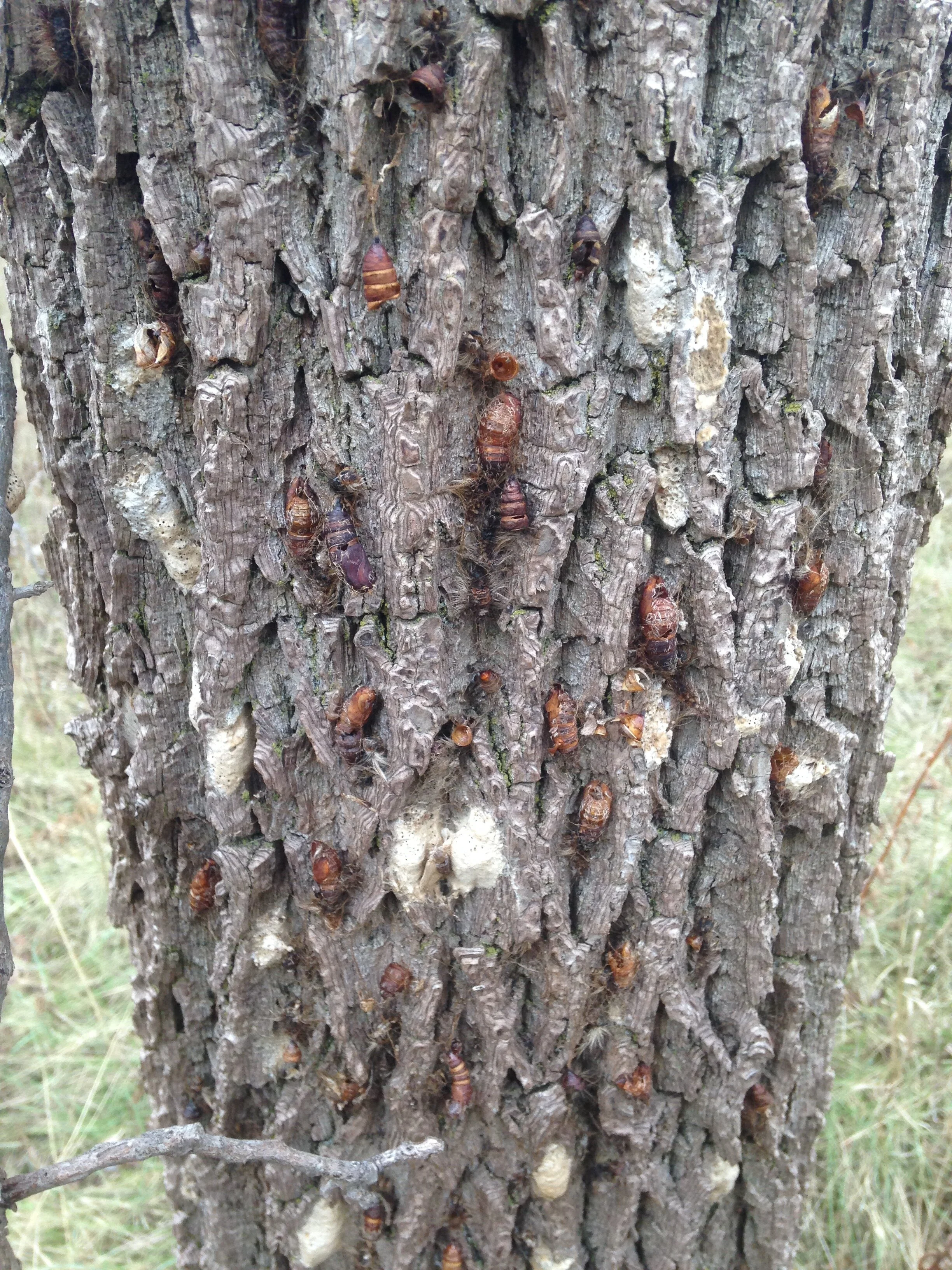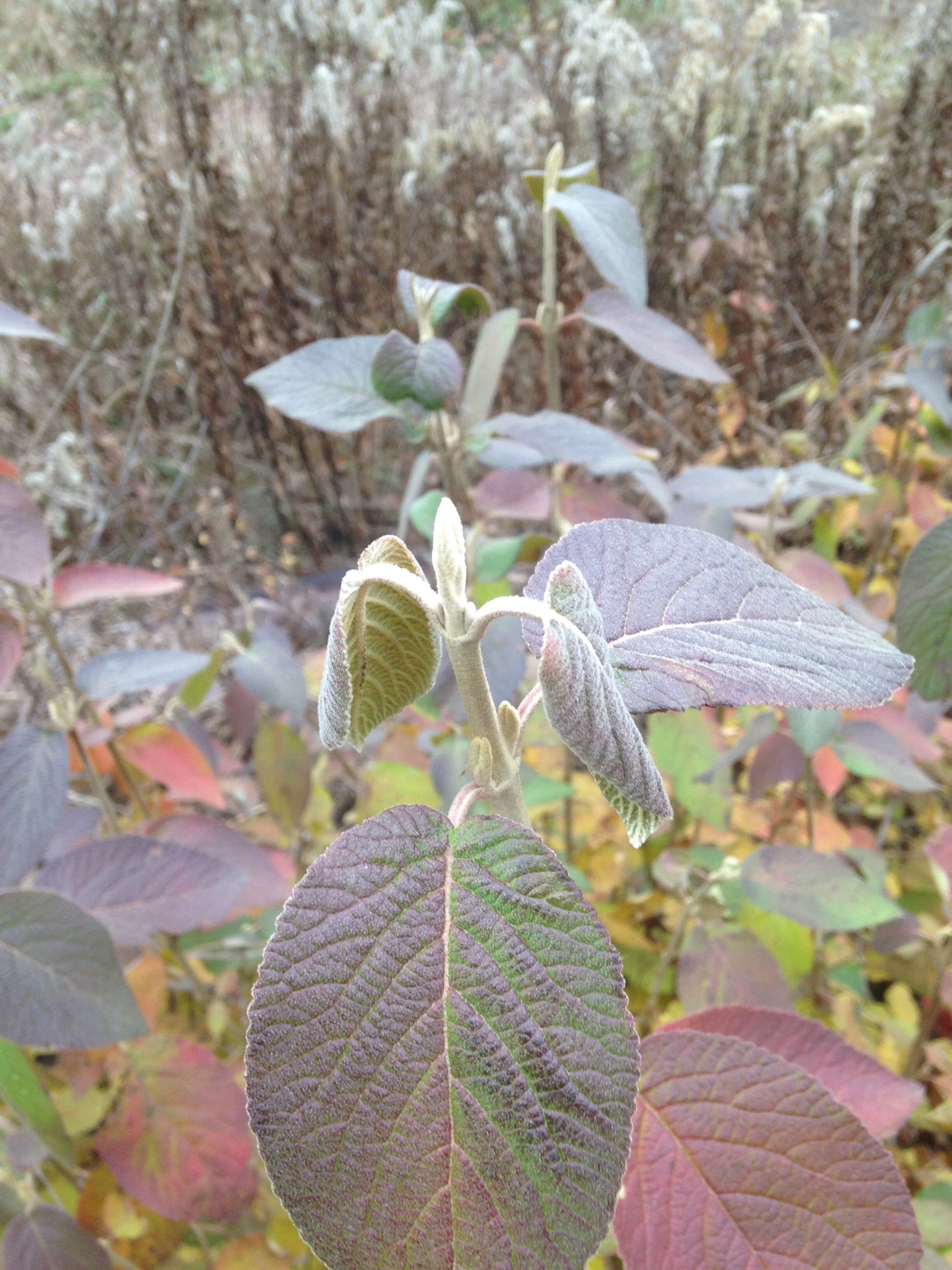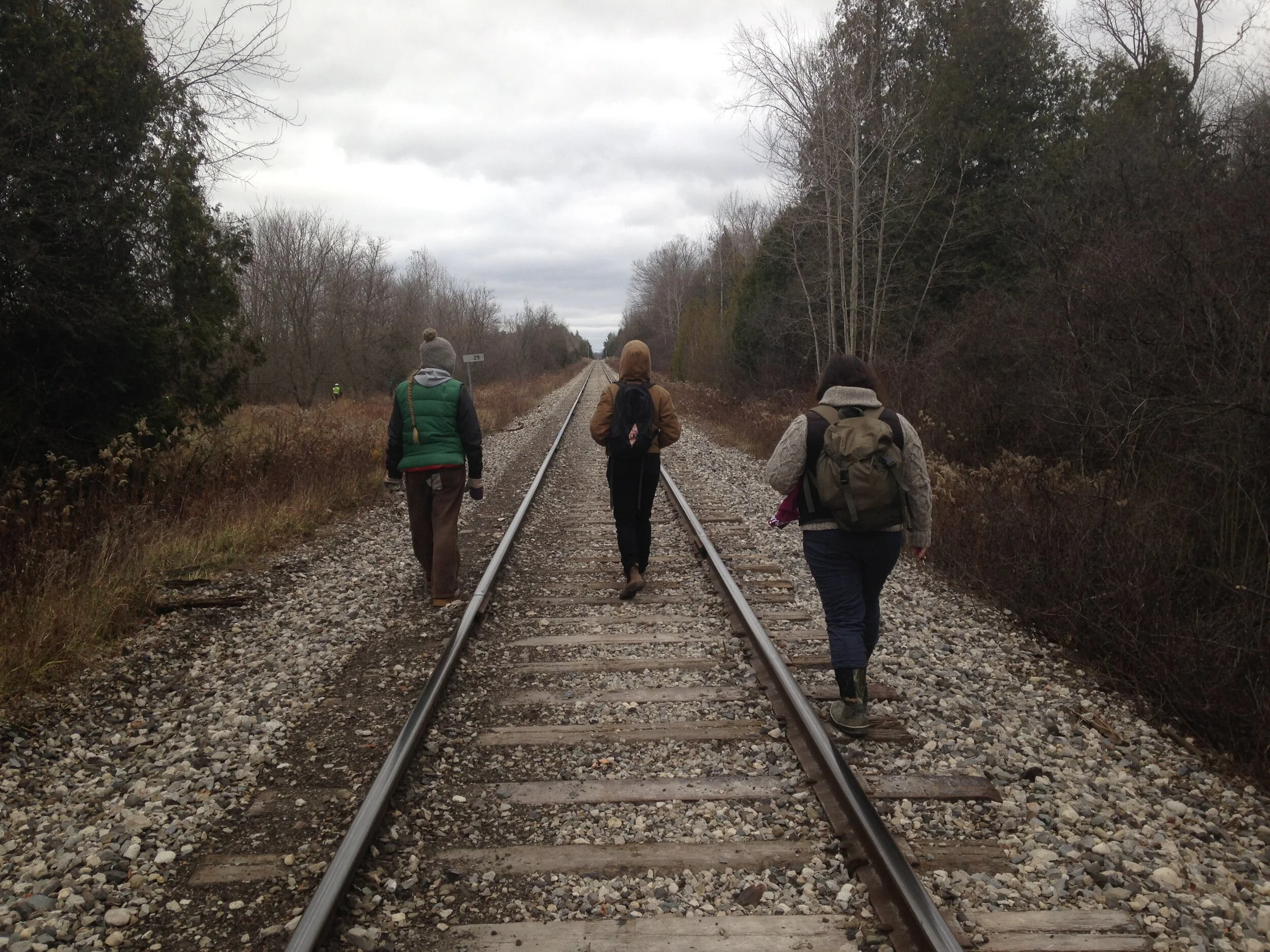Exploring the Eramosa River Valley, Nov. 21, 2020
Lou helps point out the Deer rubs
Today some pals and I went out for a couple of hours along the SouthWest wall of the Eramosa River Valley between Stone rd East and Victoria rd North, starting from the Stone rd. side.
This valley is a glacial spillway ripped open as the glaciers receded during the last glacial retreat about 20-15,000 years ago. It took some time for the river to dwindle down to the size it is now but the different water levels left a couple of flattened terraces along the valley walls where we spent most of our time today. Some of the early shrubs and trees in the area post-glaciation were plants commonly found in today’s sub-arctic tundra. Plants like Willow (Salix spp.), Birch (Betula spp.), Alder (Alnus spp.), and Junipers (Juniperus spp.) along with various Grasses and Sedges. Later came the Spruce (Picea spp.) and Poplar (Populus spp.) woodlands, and then Pines (Pinus spp.), Hemlock (Tsugae canadensis) and as the climate warmed the seeds from deciduous trees borne by the intentional transport of animals (caches, dropped seeds, etc), and unintentional transport (scat deposits, seeds trapped in pelts, etc.) were brought up from refugia in the South.
Indigenous artifacts from 10,000 years ago up to 500 years ago have been found atop the valley walls during digs and excavations while farming and during the construction of the Turf Grass Institute where we spent some of our time. Artifacts including spear heads, scraping tools, hearth locations and chips of flint were discovered on the top ridge (likely originating somewhere near Flint Ridge, Ohio from around 8,500 - 7,000 years ago). All these discoveries point to a long long history of habitation.
Today we explored a rejuvenating Pine and Spruce field littered with grassy patches. This area was farmed by the McQuillan brothers before it was bought up by the Province of Ontario and leased to the Turf Grass Institute. Now, slated for development, we went out to explore and see what we might find.
We first came up to a spot between Stone rd and the conifers where only a couple of weeks before there was half of a carcass of a White-Tailed Deer (Odocoileus virginianus). September 30th, when we first found the carcass, there were two legs, spine, ribs, sternum, a scapula, and some scattered bits of flesh. Two legs, the neck and skull were missing. We hadn’t been able to tell whether the Deer was young or old, male or female, or if there had been any trauma to the skull (is that how they died?). Today, when we walked by, most of the carcass was gone. A few meters away from the original spot we did find a few leg bones and a few remaining pieces of flesh, but most everything else was gone. I sadly did not get a photo.
We entered into the mixed Pine and Spruce forest, “Squirrel City” as our guide Lou named it. We found piles of Norway Spruce (Picea abies) cones and a couple of unknown bones laying about here and there. Ducking into another bunch of Spruces, we noticed a massive pile of cones, both entire and eaten from. I had recently heard one of my students describe the caching techniques of two different Squirrel species, Grey Squirrels (Sciurus carolinensis) whom he described as “filers”, filing each item away in it’s specific location, where as Red Squirrels (Tamiasciurus hudsonicus) are “pilers”, making large piles of cones, mushrooms and whatever else they tend to snack on throughout the colder winter months. Using that hint, we guessed that this massive pile was created by a Red Squirrel.
Carolyn checks out the Red Squirrel (Tamiasciurus hudsonicus) cache
While examining the Red Squirrel cache we also found a skull laying on the side of the pile. A skull on a Squirrel cone pile? What was going on? Because of Lou’s earlier discovery of a bone, which had many incisor marks, we assumed that the skull was there as a mineral supplement for the Squirrel to chew on every now and then. We passed the skull around and looked for clues and signs as to who the skull once belonged to. Can you figure it out?
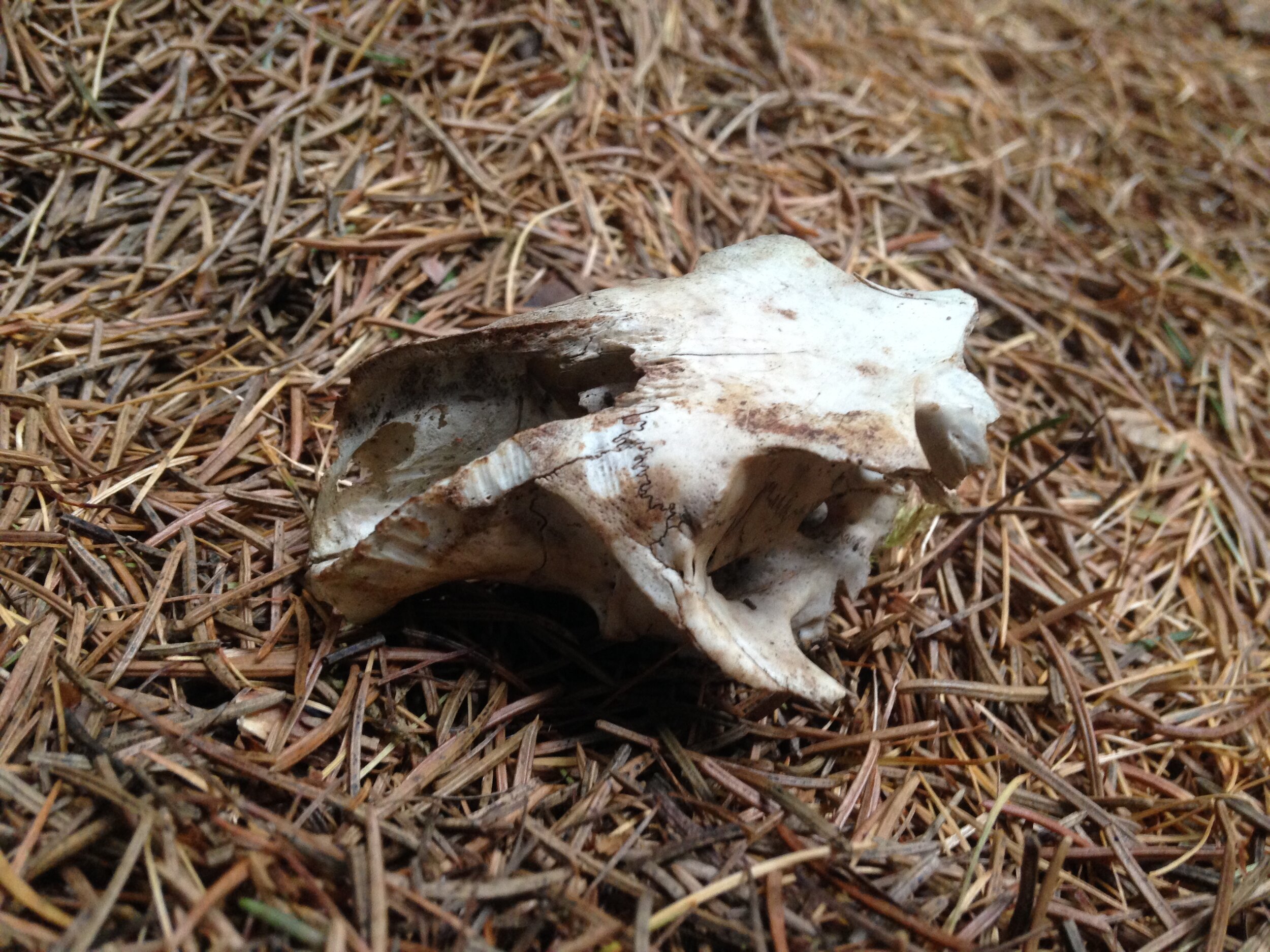
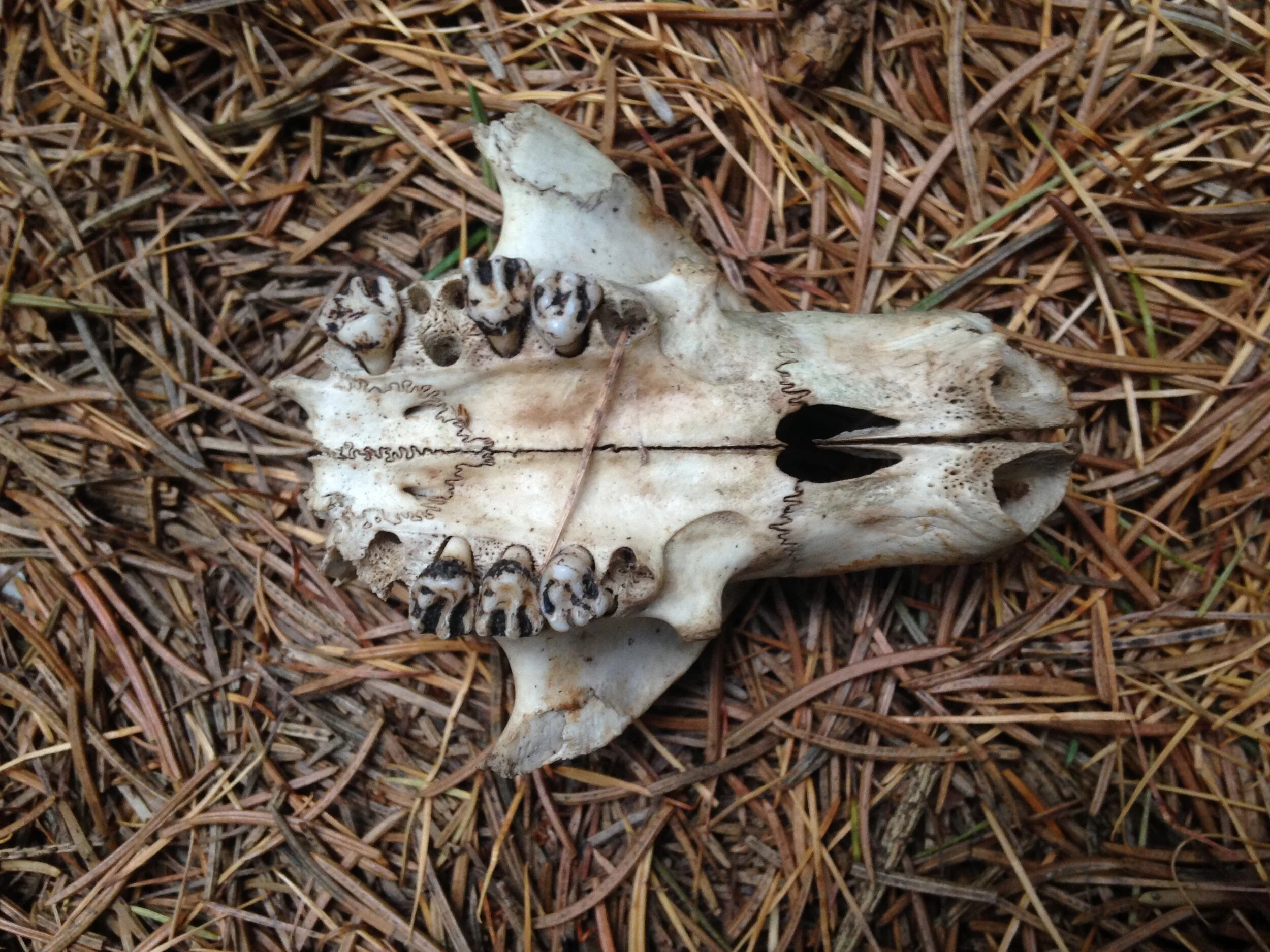
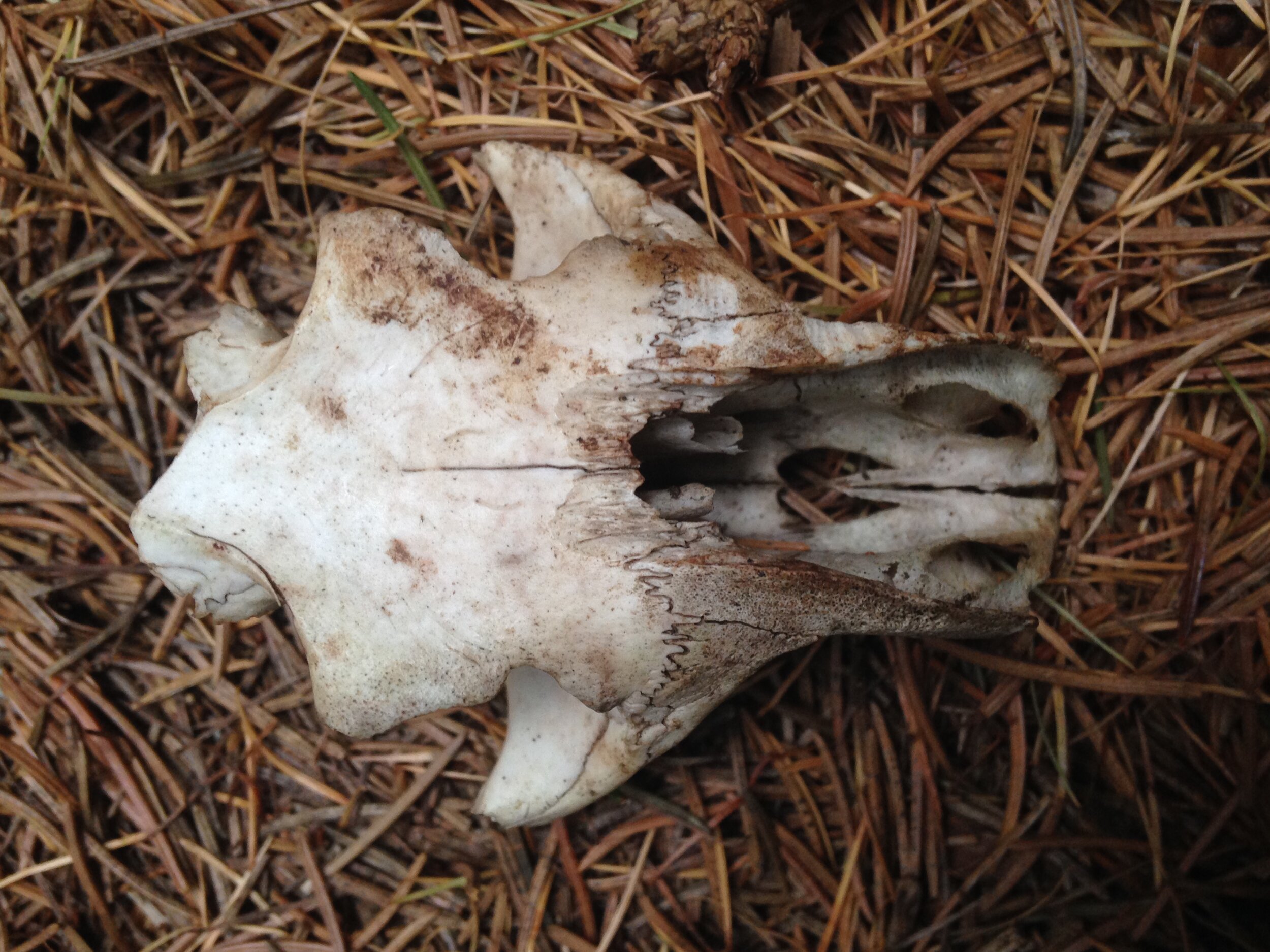
We placed the skull back on the pile and made our way further, ducking into and weaving between the trees. We saw lots of mushrooms as we walked but could only figure out one of them. The Mouse Mushroom (Tricholoma myomyces) is a small grey, “furry” capped forest mushrooms which forms mycorrhizal associations with trees, especially conifers. They fruit in clusters in the fall amidst the Pine needles and linger for a while. The needled floor of this mini Pine forest was littered with them.
Mouse Mushroom (Tricholoma myomyces)
My research is telling me that T. myomyces may be the same species as T. terreum, which is known in Europe as “Grey Knight Mushroom”, which is kind of a cool name. I can imagine a Mouse, in full plate armour, visor open, standing upright with their little sword held high in one hand, and a small grey mushroom shield in the other. It would be a very cute image if anyone could draw it for me…
As we walked on we came across a couple of holes in the ground. Some were just deeper depressions which didn’t really go anywhere, while one seemed to go fairly deep; so deep that no one who tried could reach any sort of barrier. It just kept going down. The mouth of the hole was about 14 cm in diameter. Since there were many in the area, and many more I knew of near by, I assume these holes to have been dug by a Groundhog/Woodchuck/Whistlepig (Marmota monax). They tend to dig many holes, between 2 and 10 per den system, with an average of 5 according to Mark Elbroch’s book Mammal Tracks and Sign. This common rodent is often forgotten when considering the local mammals in my area. They are here, abundant, visible, but for some reason we forget about them. Maybe because they hibernate for part of the year and we don’t remember them?
Possible Groundhog burrow underneath the Glossy Buckthorn(?). Entrance was about 14 cm tall. I could fit my arm most of the way.
The Groundhog burrow entrance was below what I assumed to be a Glossy Buckthorn (Rhamnus frangula). I assumed it to be a Glossy Buckthorn because of the leaves we found at the base of the shrub which were veined similar to the R. frangula, smooth edged like the R. frangula, and the growth habit of the shrub being all twisted with braided trunks and growing fairly low. I even broke off a dead limb to see if the colour of the heartwood would be pinkish-orange, Salmon-flesh coloured, and it was. I was certain in the field that this was a Buckthorn. But, now as I research more to confirm, the smooth bark is really throwing me off. Other Buckthorn species which are common in this area have coarse bark, sometimes mistaken for a Birch or Black Cherry (Prunus serotina). But as is shown in the photo below, the bark here is mostly smooth without pale lenticels which the books say should be present. Maybe next time I am out around this area, I will peek in at this shrub and collect more photos in search of a more definitive answer.
Glossy Buckthorn (Rhamnus frangula) maybe, growing amidst the Spruces and Pine.
As we emerged from the Spruce/Pine woods we came out into a grassy hillside with Trembling Aspen (Populus tremuloides) and Norway Maple (Acer platanoides) growing nearby. I was walking up the hill when Maddie called out that she found a bone, which is an excellent way to get my attention.
A few of us walked over and realized where we were. I looked around and realized this was the spot where a couple of weeks before, on October 29th, we found the long missing neck and skull from the Deer carcass I mentioned earlier in the post. But now again, pieces were missing. I knew the skull was gone, as I had taken it home to age the Deer, but the neck had been in this spot the last time I was here. Now only a few vertebrae remained, along with a strange looking bone which I cannot place. Do you know what bone that is?
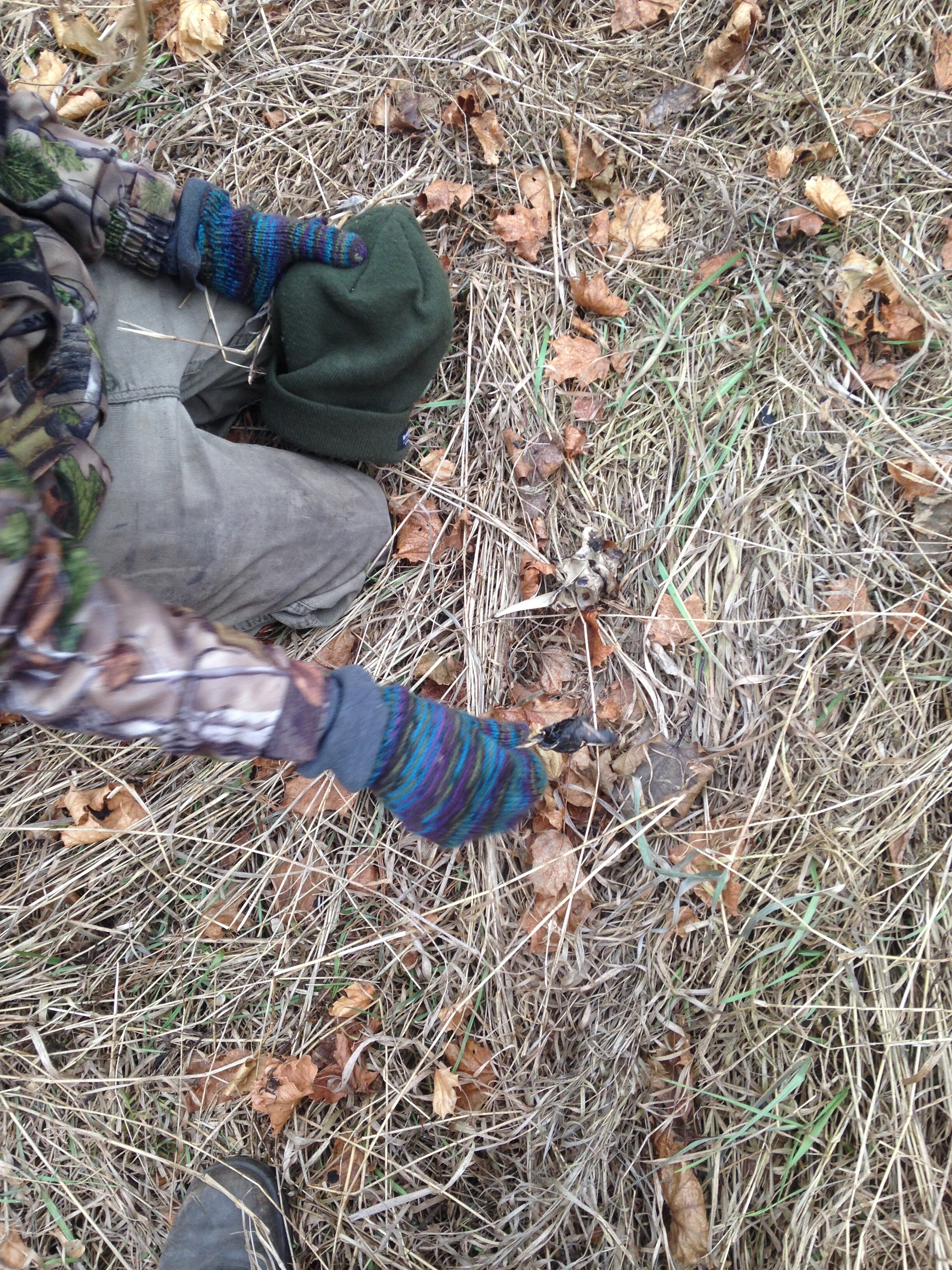
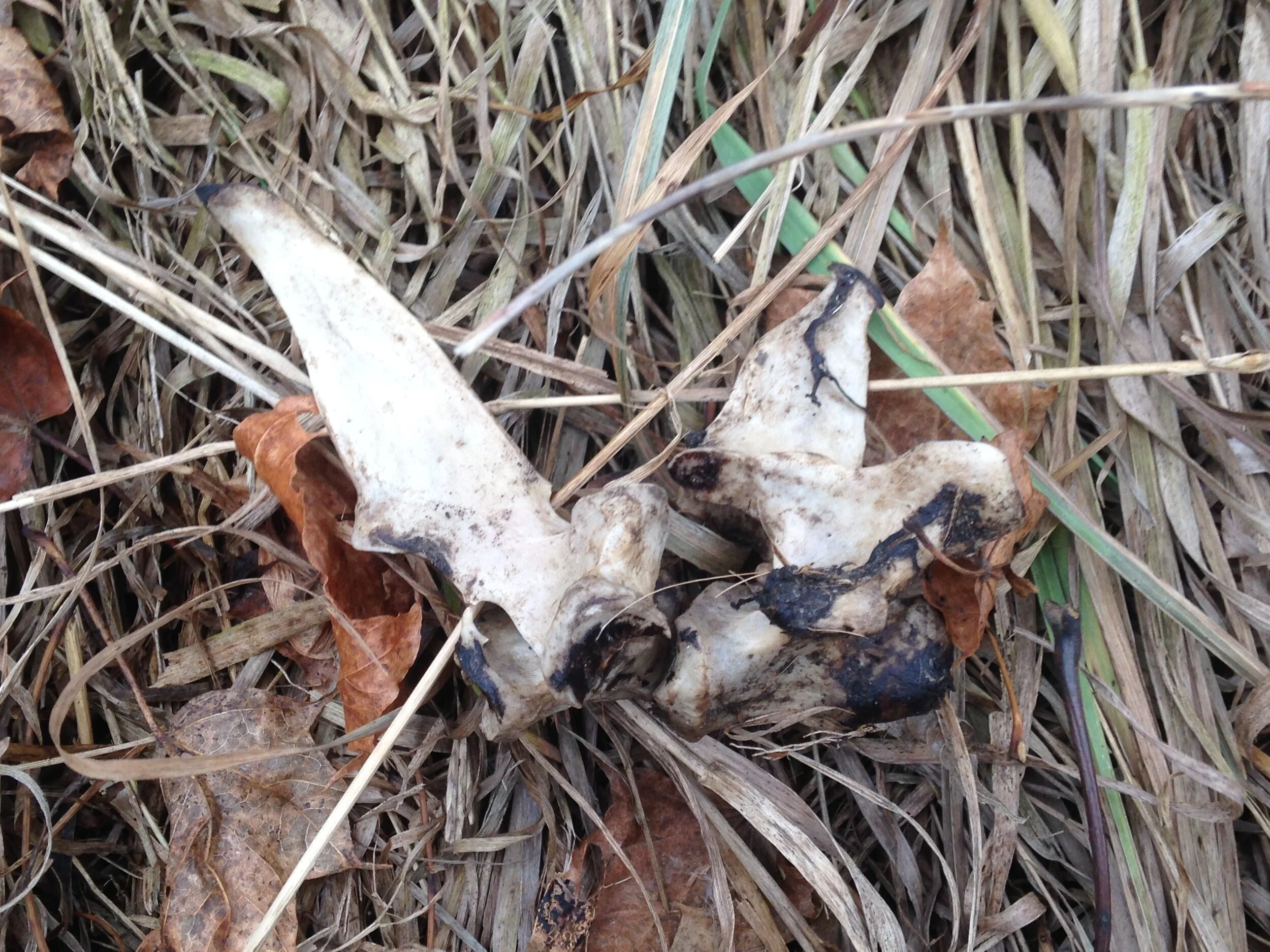
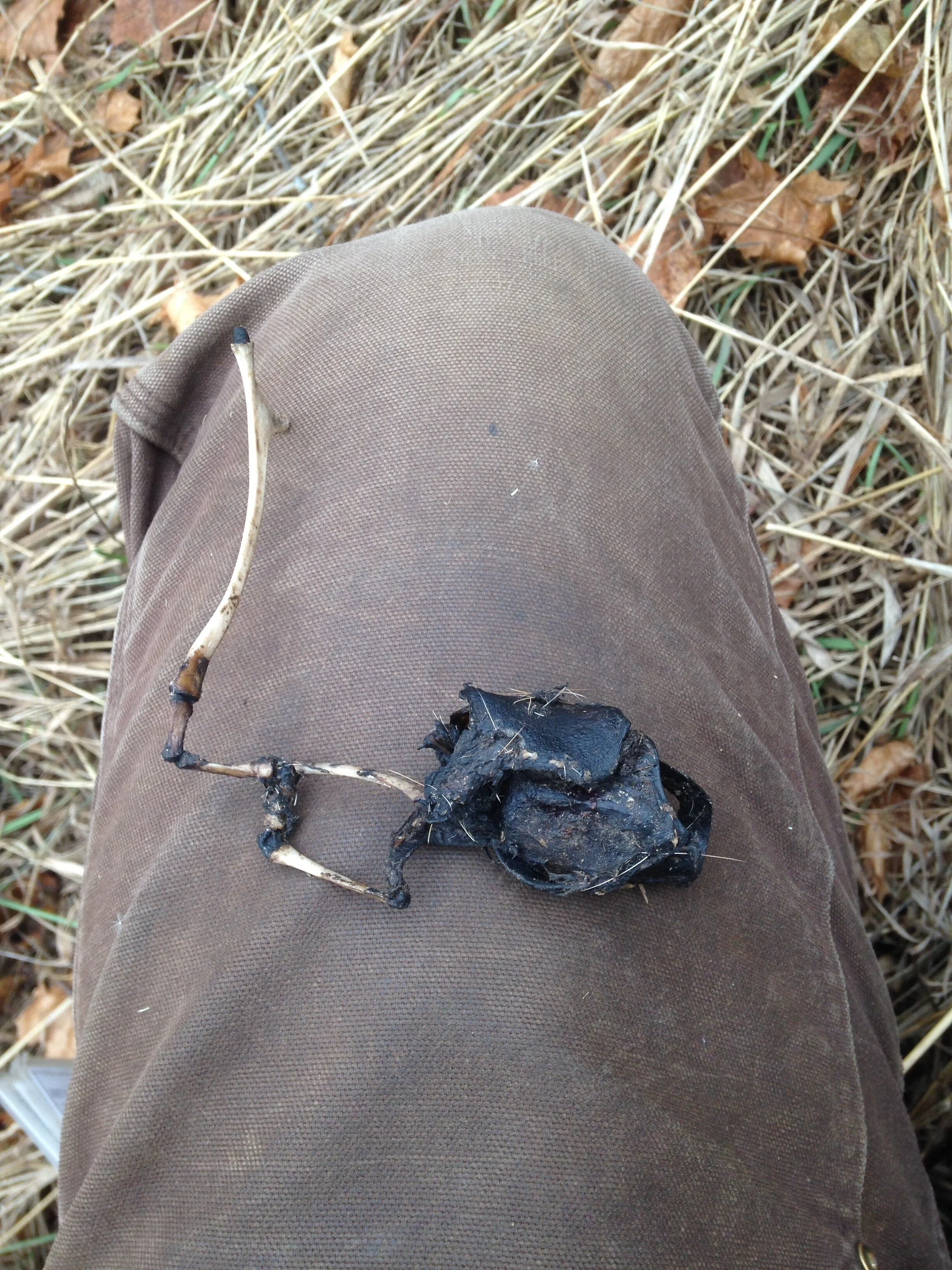
We spent some time here smelling the remaining bones. Maddie mentioned that to her the unknown bone had a skunky musky odour, and for me it had an old dry hide kind of smell. Carolyn smelled the vertebrae and noted that it didn’t smell much like anything, which seemed like it was a bit of a surprise. I smelled it as well and agreed. No scent of death, or rot, or anything really. Just old bones.
Making our way further up the valley walls to the top of crest of the hill we headed towards a known antler rub I had seen a few of days before. It was the first and only rub I have seen this year in our area. I don’t know if the bucks have a lot of pressure on them this year, maybe with more folks hunting this year, or others spending more time outdoors, maybe that increased human presence has pushed the bucks further into the bottomland swamps in the thicker woods nearby. But this buck was making their presence known. This rub was done on a Willow, but I am unsure of the species. There was no scrape or any other sign. I couldn’t even make out tracks, as others had been walking around the rub and looking at before I got there (not that I’d be able to see them anyways - just grasses). It was fun to go back today and check it out again.
Fresh antler rub on the Willow (Salix sp.) at the Turf Grass Institute.
While noting the rub, Brier pointed out a nest in the row of Willows beside the rub. When I had gotten a good look at the rub, I began investigating the nest with her. She noticed the fine Milkweed filaments packed in at the bottom of the cup, and I pulled out the measuring tape in hopes of identifying the nest when I got home. Here are the measurements:
6.5 cm depth to the entire nest as measured from the upper rim to the base on the outside.
7.5 cm in diameter across the top of the nest.
3 cm depth from the top of the rim of the cup to the base on the inside of the nest.
1.5 cm wide rim, though this fluctuated, so maybe an average might be more like 1.25 cm.
Based on these measurements, on the materials within the nest, on the species chosen, where on the Willow the nest was placed and how high, I believe the nest was built by an American Goldfinch (Spinus tristis). In the summer a student of mine and I took the time to measure another nest in a small Maple on the other side of the valley and it was very similar. Being a common Bird in the area, with similar attributes to the summer nest (which also had a stillborn egg which assisted in the I.D.) it was helpful to look at this nest more in depth so I can start to get a feel for American Goldfinch nests and what to look for and where.
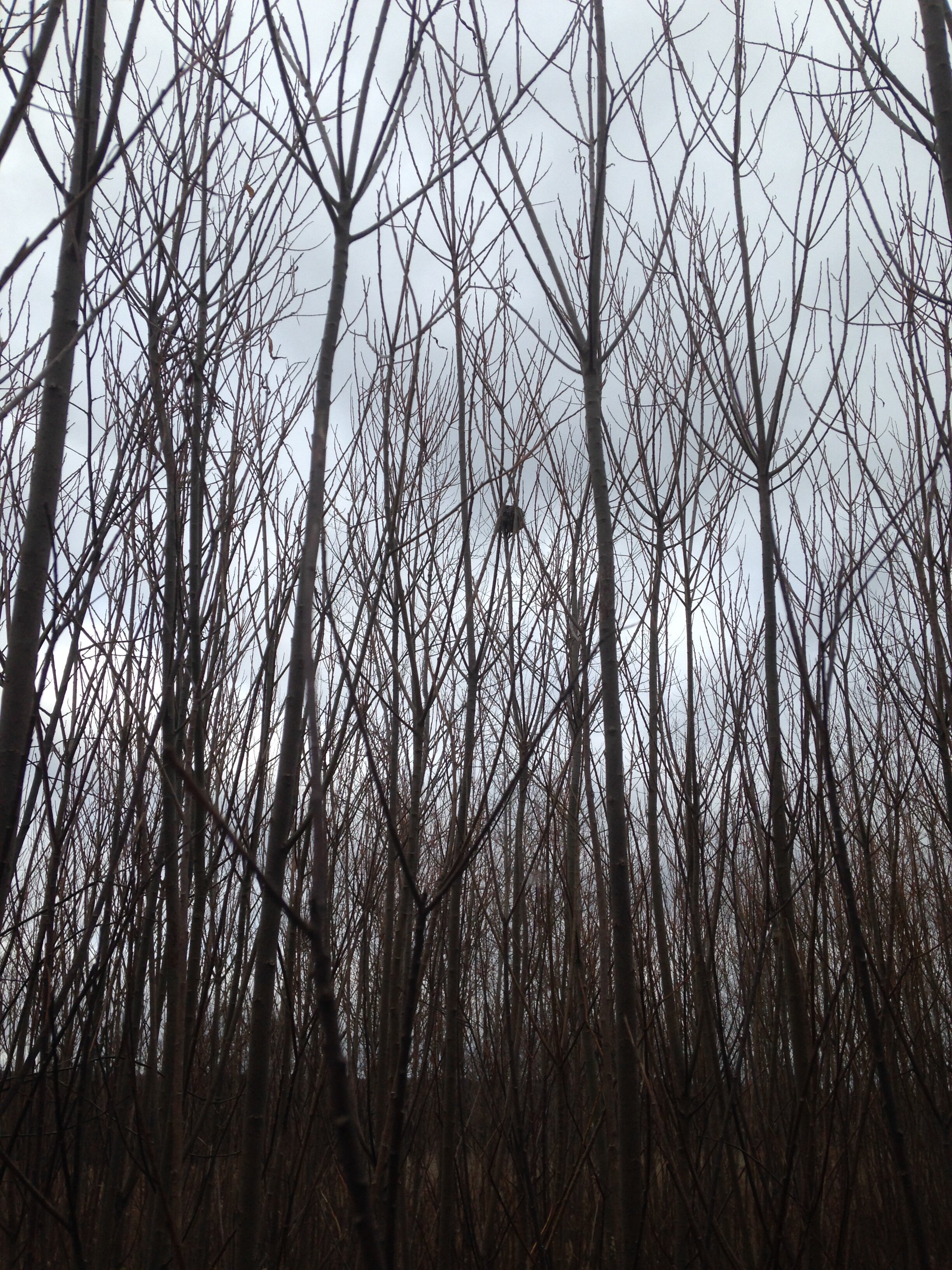

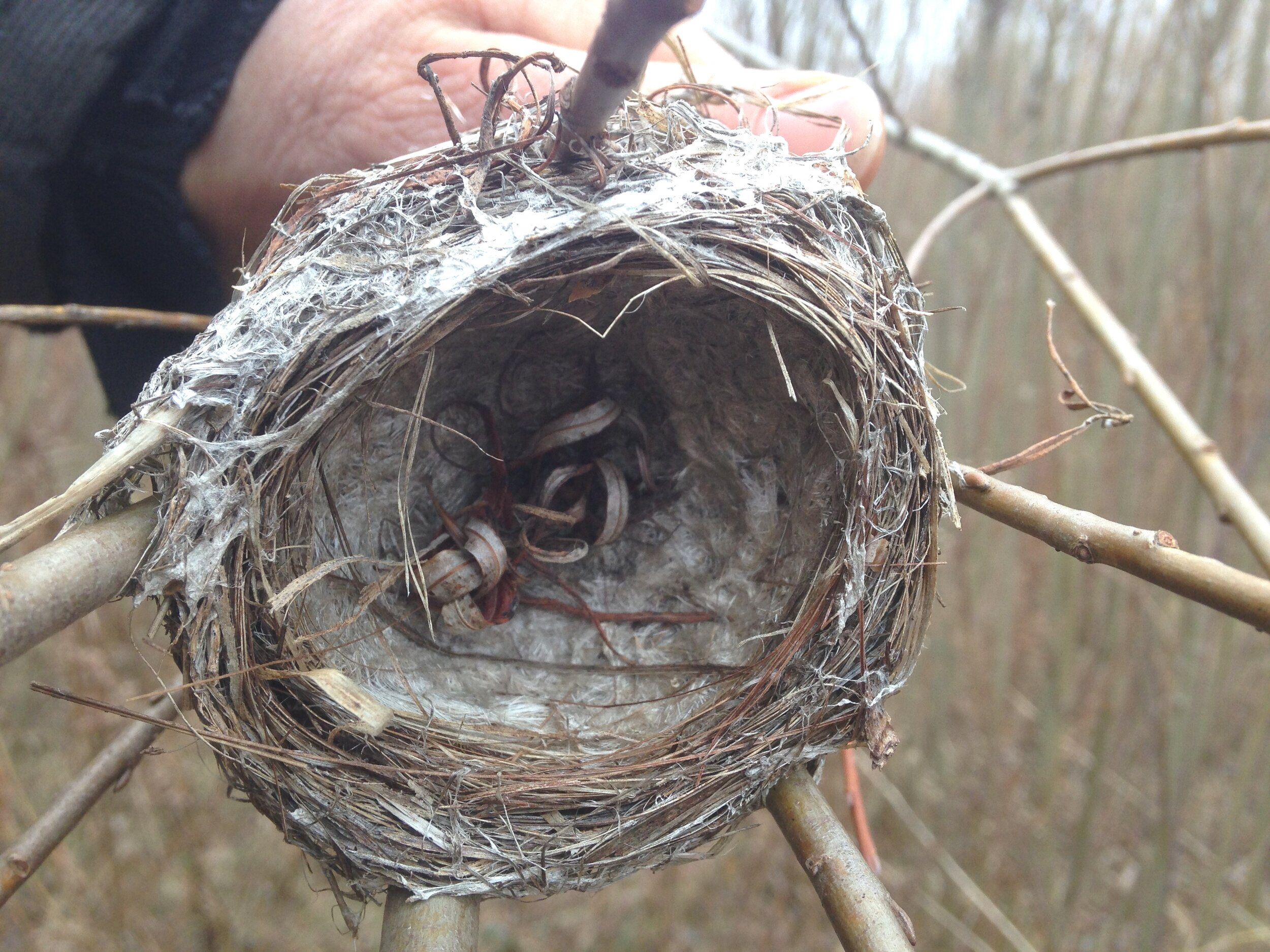
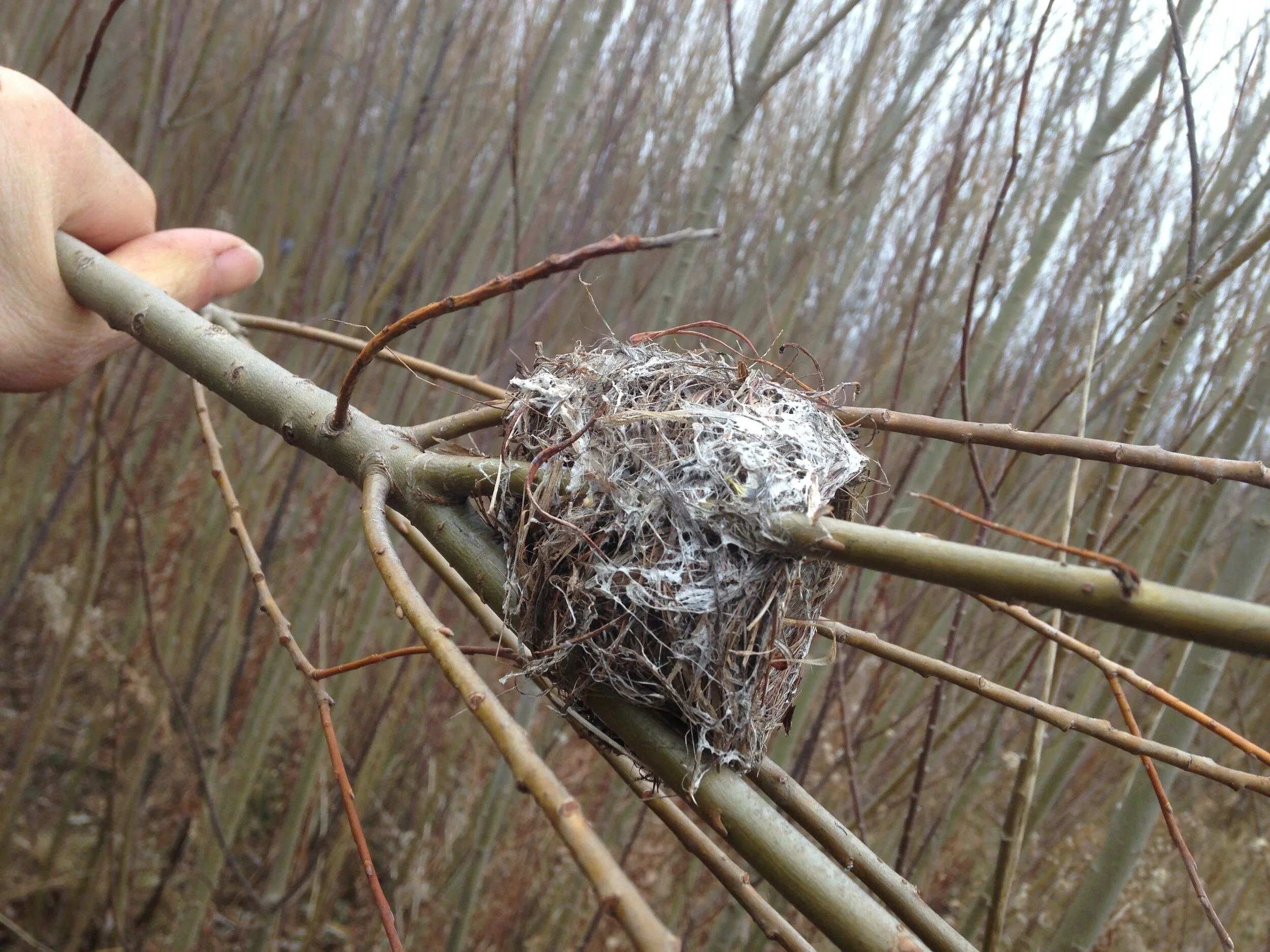
At this time two of our crew had to leave, but the five of us walked along through the outer edges of the Turf Grass Institute and checked out some faint trails in the grass (averaging 11 cm trail width), and looked at a Gypsy Moth (Lymantria dispar dispar) infestation on a Black Walnut (Juglans nigra). Gypsy Moths, if you don’t know, aren’t from here and because of that have fewer natural predators in our area. They, like all caterpillars, eat plants and the leaves of trees and shrubs. With few natural predators, sometimes Gypsy Moth caterpillar populations keep growing, keep feeding on plants and leaves and there are concerns that they may defoliate trees entirely. A tree can handle one or two years of defoliation if they are strong and in good health, but after a couple of years of no food (can’t make sugars without photosynthesis from the leaves), the trees could succumb to the Gypsy Moth infestations. We wondered together, who, if anyone eats the Gypsy Moth and if we humans could be eating the Gypsy Moth eggs as a biological control mechanism?
I found a document from 1978 put out by the US department of agriculture all about Gypsy Moth predators, and while I still don’t know if it is safe for us humans to eat the Gypsy Moth eggs, it turns out lots of animals consume the Gypsy Moth, in all life stages. Some birds including Black-Capped Chickadee (Poecile atricapillus), Blue Jay (Cyanocitta cristata), Red-Eyed Vireo (Vireo olivaceus), Rufous-Sided Towhee (Pipilo erythrophthalmus), Scarlet Tanager (Piranga olivacea), Northern Oriole (Icterus galbula), Catbird (Dumetella carolinensis), and American Robin (Turdus migratorious) commonly feed on Gypsy Moths all the time, not just in eruptive years. This means that the Birds listed above do well at keeping Gypsy Moth populations in low numbers, all the time, and don’t just start feeding on them when there are huge numbers (because by then the Gypsy Moths are already wreaking havoc in the forest defoliating the trees).
That same document went on to say:
After completing analysis of habitats and densities of the mammals and their feeding behaviour, it was determined that White-Footed Mice and Shrews have significantly greater predator potential than other species. White-Footed Mice have demonstrated their ability to eat large numbers of Gypsy Moths in the wild.
After an intensive study of this species and the many other Gypsy Moth predators, the White-Footed Mouse is recognized as the single most important predator of the Gypsy Moth.
Awesome! Again, I get this image of our little hero Mouse, who’se armour has been set aside, now feasting on the adult, larvae and eggs of the Gypsy Moth!
Gypsy Moth (Lymantria dispar dispar) infestation on a Black Walnut (Juglans nigra)
After hanging out with the Gypsy Moths, and one more of our crew having to take off we headed North, back down into the valley to start a slow ambling return back to the cars where we first met up. I had walked through this part of the valley earlier in the morning looking for, and calling for, a Barred Owl who has been seen in the area, but it was nice to try again. There was no Owl luck for me today but I got to stop and talk about trees with Brier. We talked about trees and shrubs that are opposite branching in our area. I shared the acronym I learned from Drew Munkman’s book “Nature’s Year”.
He uses the mnemonic “HAM LiVED” to remember the genus’ with opposite branching. Here’s how it breaks down:
H for Honeysuckle
A for Ash
M for Maple
Li for Lilac
V for Vibernum
E for Elder
D for Dogwood (though there is one Dogwood, common in our area which is opposite branching)
I find mnemonics really useful and will one day post an entry on mnemonics highlighting some of my favorite ones. As I was finishing sharing the HAM LiVED mnemonic we walked past a Wayfairing Tree (Vibernum lantana) which has opposite branching and beautiful leaves this time of year. This shrub looks a lot like the native Hobblebush, but the leaves on the Hobblebush are wider than they are long. The flowers of the Wayfairing Tree smell pretty weird in the summer time and I think that I can smell the tree in the winter when I walk by them...kind of smell like death or rot, but I have not asked others for their opinions yet.
Wayfairing tree (Vibernum lantana), with beautiful autumn leaves and opposite branching pattern.
We took the tracks from there, heading back to the cars. I hadn’t eaten since around 5pm the day before and was starting to feel it.
I was excited that we had gone out and explored this side of the valley for the first time with this crew. It was a first social gathering for some since March, and we did pretty good at keeping our distance most of the time. It’s always nice to explore the wilder edges of the common places we know, and even better with others. Others will see things I’d miss, and I may be able to contribute to the conversation with things I have been learning about. Together we get to know the land a little deeper, a little more thoroughly, every time we step out there.
Walking back to the cars along the tracks.



